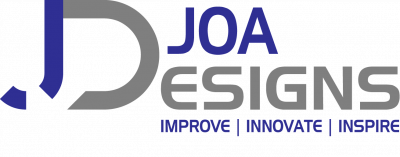Site blog
https://www.bullardphotos.org/?p=6947&preview=true |

Recent advancements in AI and machine learning are pushing the boundaries even further. AI-powered denoisers, texture generators, and neural rendering tools can accelerate workflows while enhancing image quality. Platforms like NVIDIA’s DLSS and Intel’s XeSS improve real-time performance without sacrificing realism.
We’re also seeing AI-generated photorealistic environments, faces, and objects that are virtually indistinguishable from real ones, ushering in a new era where CGI and reality are almost impossible to separate.
what is 3d rendering
So how close can we get to reality in 3D rendering? In many cases—especially with still images—it’s already here. When done well, photorealistic renders can fool even the trained eye. In interactive and animated contexts, we’re approaching that threshold faster than ever before, thanks to real-time ray tracing and AI enhancements.
Ultimately, photorealism in 3D rendering is not just about replicating the physical world—it’s about understanding how we see, feel, and respond to visual information. The closer we get to mastering that, the closer we get to true reality in digital form.
The Human Element: Perception and Artistry
Despite all the technology, photorealism isn’t purely scientific—it’s also an art form. Human perception plays a big role. Subtle exaggerations in color contrast, vignette, or composition can enhance realism in ways that are technically inaccurate but visually convincing.
Photorealism requires artistic judgment to understand how people expect reality to look—and when to deviate slightly from physical accuracy to create a more believable illusion.
Challenges and Limitations
While the bar for realism continues to rise, there are still challenges:
-
Render times for high-quality images can be extensive, especially when dealing with complex scenes and global illumination.
-
Realism in motion is harder to maintain than in static renders, as physics, animation, and real-time interaction come into play.
-
Cost and resources, such as access to high-end hardware and professional talent, can limit photorealistic output for smaller teams or projects.
A Trusted Industry Standard
Finally, solidworks training has become the industry standard in product design. Its widespread adoption across companies means that consultants using the platform enjoy better compatibility, client trust, and access to a vast community of users and resources.
Its reputation is built on reliability, ongoing innovation, and a strong ecosystem of support, including training programs, certified courses, user groups, and online forums. This ensures that consultants always have help available, whether they're troubleshooting or looking to push their skills further.

In the fast-paced world of product development,product design consultants need tools that offer power, flexibility, and precision. SOLIDWORKS has earned a reputation as one of the most trusted CAD platforms in the industry, and for good reason. It delivers a complete suite of tools that support the entire product design process—from concept to final production—making it an indispensable solution for design professionals.
Seamless Collaboration Across Teams and Clients
Product design is rarely a solo process. Consultants often need to collaborate with engineering teams, manufacturers, and clients. SOLIDWORKS supports collaborative workflows with features like PDM (Product Data Management) and cloud-based 3DEXPERIENCE integration, which ensure that every stakeholder has access to the latest files, revisions, and design intents.
Real-time collaboration tools reduce miscommunication, improve productivity, and keep projects aligned. Consultants can quickly implement feedback, share updated 3D models, and track design history—making client communication more efficient and transparent.
Accurate Simulation and Testing Capabilities
Design consultants don’t just model products—they validate them. SOLIDWORKS Simulation tools allow for in-depth stress testing, thermal analysis, and motion simulation directly within the design environment. These capabilities are essential for evaluating how a product will perform under real-world conditions before it’s ever manufactured.
This not only saves time and cost on prototyping but also builds confidence in design decisions. Consultants can present clients with data-backed insights, ensuring both form and function are optimized early in the design process.
4. Rapid Prototyping and Manufacturing Integration
Consultants are often expected to deliver designs that are ready for production or prototyping. SOLIDWORKS simplifies this by offering tools like SOLIDWORKS CAM, which allows users to generate toolpaths and CNC-ready files from within the platform. It also supports integration with 3D printing workflows, making it easy to export models for rapid prototyping.
Additionally, its comprehensive drawing and documentation tools help consultants create detailed technical specs, assembly instructions, and BOMs (Bills of Materials) with minimal effort. These documents are essential for communicating designs to manufacturing partners.
Customization and Automation with DriveWorks
For consultants who work on product variations or custom design configurations, solidworks training integrates seamlessly with DriveWorks, an automation tool that allows for rule-based design. This helps consultants reduce repetitive work and deliver custom design options at scale.
Whether it’s generating new sizes of a product or creating entire configurations for sales teams, automation adds significant value to consulting services—boosting both efficiency and profitability.

Stylish Men’s African Outfits for Every Occasion
African fashion for men has evolved into a dynamic blend of tradition, modern style, and cultural pride. From richly embroidered agbadas to crisp Ankara shirts and contemporary kaftans, there’s a perfect african dresses for women for every event—be it formal, casual, or festive. Whether you’re attending a wedding, heading to a party, or just want to make a bold statement with everyday wear, African menswear offers style, versatility, and substance.
Here’s a breakdown of stylish men’s African outfits tailored to fit every kind of occasion:
Weddings and Special Ceremonies
For grand celebrations like weddings, naming ceremonies, or milestone birthdays, men’s African fashion shines brightest with regal and elaborately designed pieces.
Top Picks:
-
Agbada: A flowing, three-piece ensemble worn over a tunic and trousers. Typically made with brocade, damask, or jacquard fabrics and adorned with embroidery. Agbadas symbolize status and class.
-
Senator Suits: A modern favourite, these tailored two-piece outfits are sleek, structured, and often minimalistic, but can be styled with embroidered details for elegance.
-
Dashiki Sets: Bright and bold dashikis paired with matching pants create a festive, standout look perfect for traditional weddings.
Style Tip: Choose rich fabrics like velvet or lace, and complete the look with a cap—Fila, Abeti Aja, or Kufi depending on your cultural background.
Casual Gatherings and Daytime Events
For birthdays, brunches, or family get-togethers, you want something relaxed but stylish.The mens african clothing uk doesn't mean you have to go over-the-top—comfort and culture can coexist beautifully.
Top Picks:
-
Ankara Shirts: Pair an Ankara short-sleeve or long-sleeve shirt with chinos or jeans. These are vibrant, expressive, and easy to wear.
-
Kaftan Tops: Shorter kaftan tops with subtle embroidery or bold prints give you a cool and composed look.
-
Hybrid Wear: Think polo shirts or hoodies with Ankara fabric panels—a stylish fusion of modern streetwear and tradition.
Style Tip: Keep it simple—let the fabric do the talking. Neutral trousers allow colourful tops to pop.

African print dresses are bold, vibrant, and deeply expressive. Rooted in cultural heritage and artistic storytelling, these garments have found their place in modern fashion across the globe. Yet, for some, wearing such vivid styles—especially for the first time—can feel intimidating. Whether you're drawn to the prints because of your heritage or simply appreciate their beauty, wearing african print dresses with confidence comes down to embracing the look, styling it right, and owning your presence.
Understand the Power Behind the Prints
African prints—like Ankara, Kente, Dashiki, and Batik—are more than just patterns. They carry stories, cultural significance, and identity. When you wear an African print dress, you’re not just making a style statement; you’re embracing a piece of art with meaning. Knowing the story behind your print can help you wear it with pride and intention.
For example, Kente cloth from Ghana represents royalty and high status, while Adire from Nigeria reflects creativity and tradition. Learning about the meaning behind the patterns you wear adds depth to your fashion choices and builds confidence in your expression.
Choose a Style That Fits You
Confidence often begins with comfort. African print dresses come in endless styles—wrap dresses, fit-and-flare, maxi gowns, peplum dresses, shirt dresses, and more. Choose a silhouette that flatters your body type and aligns with your personal taste.
-
New to prints? Start with a simple shift dress or a structured piece with minimal accessories.
-
Love bold fashion? Go for a statement maxi dress with dramatic sleeves or a high-low hem.
-
Prefer subtlety? Opt for a dress with African print accents or mixed fabrics for a toned-down approach.
When the dress fits right and feels natural, your confidence will radiate.
Accessorise Thoughtfully
African dresses uk already carry a lot of visual interest, so how you accessorize matters. You want to complement—not compete with—the vibrancy of the fabric.
-
Neutral accessories like nude heels, tan handbags, or gold jewelry allow the dress to shine.
-
Cultural accessories such as beaded necklaces, cowrie shell earrings, or headwraps can enhance the authenticity and give your outfit a rooted look.
-
Modern contrast is also welcome—pair your dress with a denim jacket, minimalist sneakers, or a structured blazer for a balanced style.
The key is to strike a look that reflects your personality while maintaining harmony with the dress.
